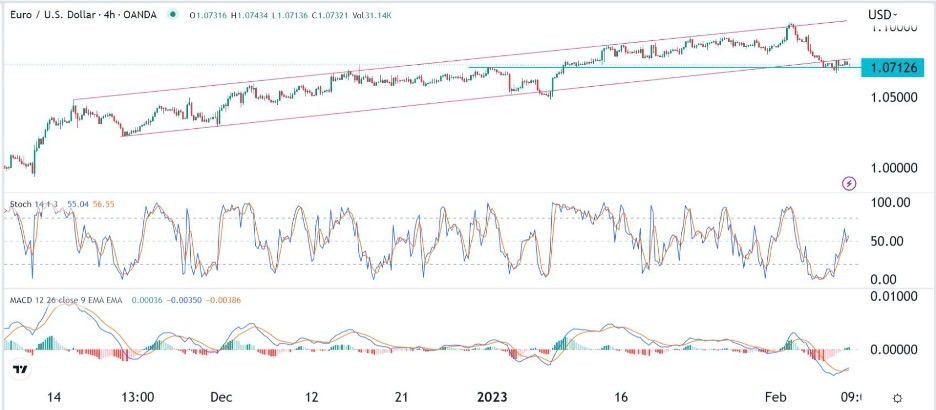The EUR/USD pair pulled back amid a significant risk-off sentiment among investors.
Bearish view
- Sell the EUR/USD pair and set a take-profit at 1.0500.
- Add a stop-loss at 1.0865.
- Timeline: 1-2 days.
Bullish view
- Set a buy-stop at 1.0785 and a take-profit at 1.0865.
- Add a stop-loss at 1.0650.
Sentiment among investors is changing as investors continue weighing on the next actions by the Federal Reserve. The US dollar index (DXY) has jumped above $103 while the Dow Jones and Nasdaq 100 indices have pulled back. It is against this backdrop that the EUR/USD pair has retreated and is hovering near its lowest point since January. It has pulled back by ~2.75% from its highest point this year.
Risk-off sentiment returns
The EUR/USD pair pulled back amid a significant risk-off sentiment among investors. This situation accelerated almost two days after the Federal Reserve downshifted its rate hikes policies. It decided to hike interest rates by 0.25% on Wednesday after it raised rates by 0.50% in its December meeting.
The main worry among investors is that the labor market remains significantly strong, with the unemployment rate sitting at its lowest level in 53 years. As a result, there are concerns that the tight labor market, coupled with rising wages, will maintain inflation at an elevated level for long.
These fears were confirmed by Jerome Powell, the Fed Chair on Tuesday. In a statement, the Fed Chair said that while the US was starting to have disinflationary moves, the tight labor market was a key hindrance. Other Fed officials who have talked this week, including James Bullard, are supportive of higher rates for longer.
Looking at the economic calendar, there will be no major economic data from the US. The only data to watch will be the preliminary German inflation data. After retreating in December, economists expect that the country’s inflation rose by 0.8% in January. On a YoY basis, they expect that inflation rose by 8.9%.
EUR/USD technical analysis
The EUR/USD price was largely flat on Thursday after falling for the past four straight days. It moved below the lower side of the ascending channel shown in red. This is also an important level since it was the highest point on December 30.
It has also moved slightly below the 50-period moving average. At the same time, the MACD and signal line appear to be forming a bullish crossover, albeit in a low-volume environment. The two lines of the Stochastic Oscillator have continued to rise.
Therefore, the pair will likely continue consolidating on Thursday because there is no major economic event scheduled. A break below this week’s low of 1.0710 will open the possibility of it moving to the support at 1.0500.




